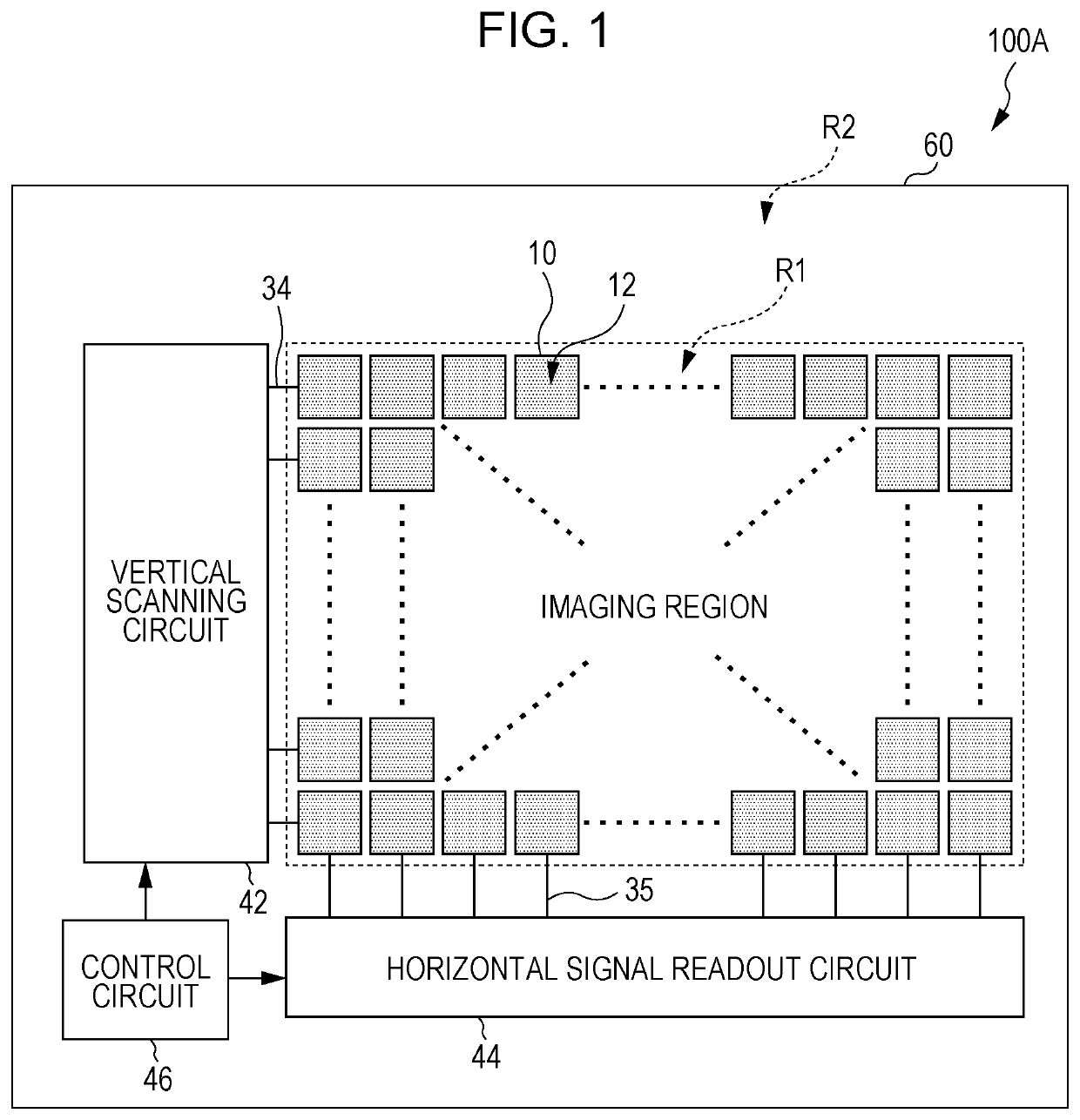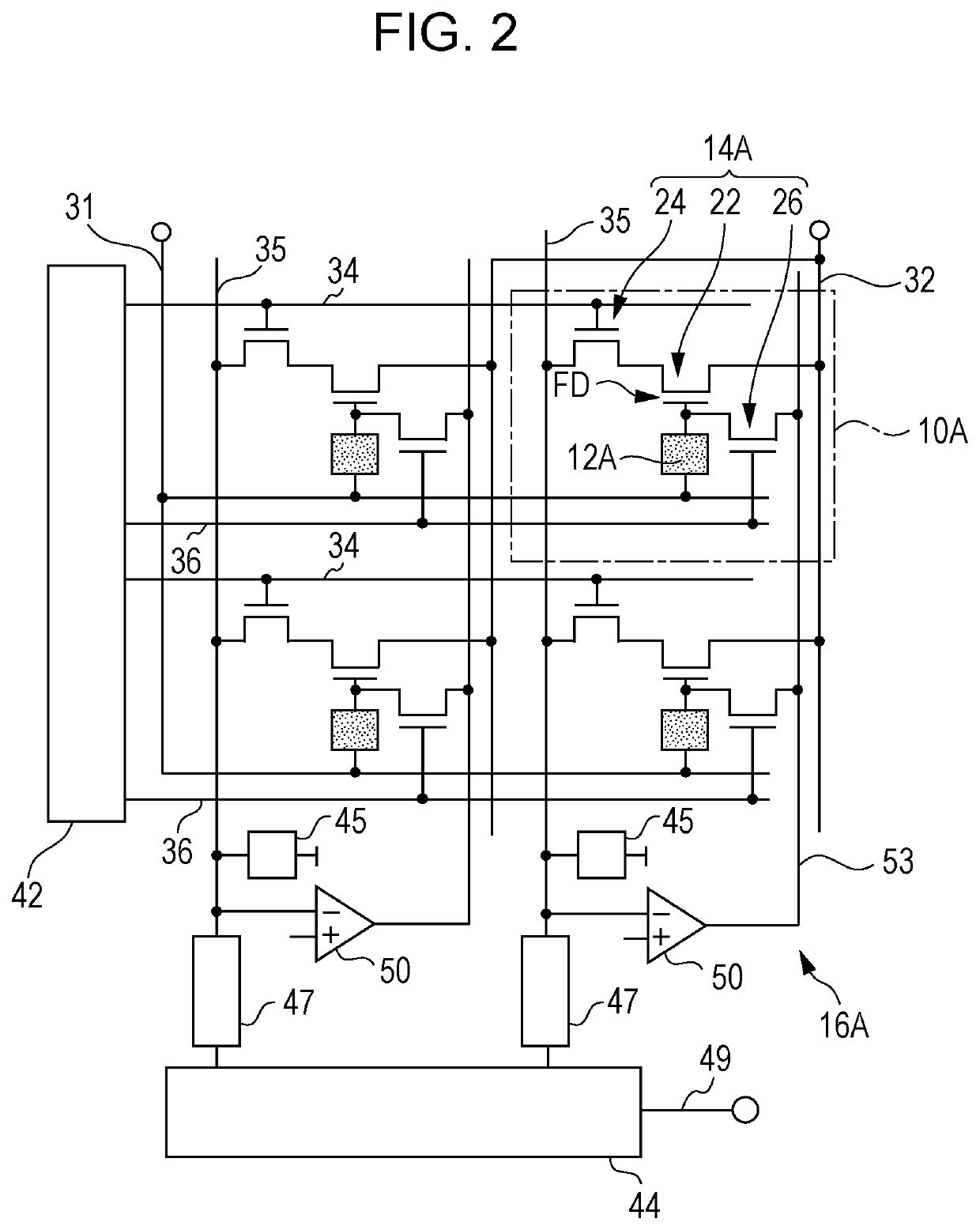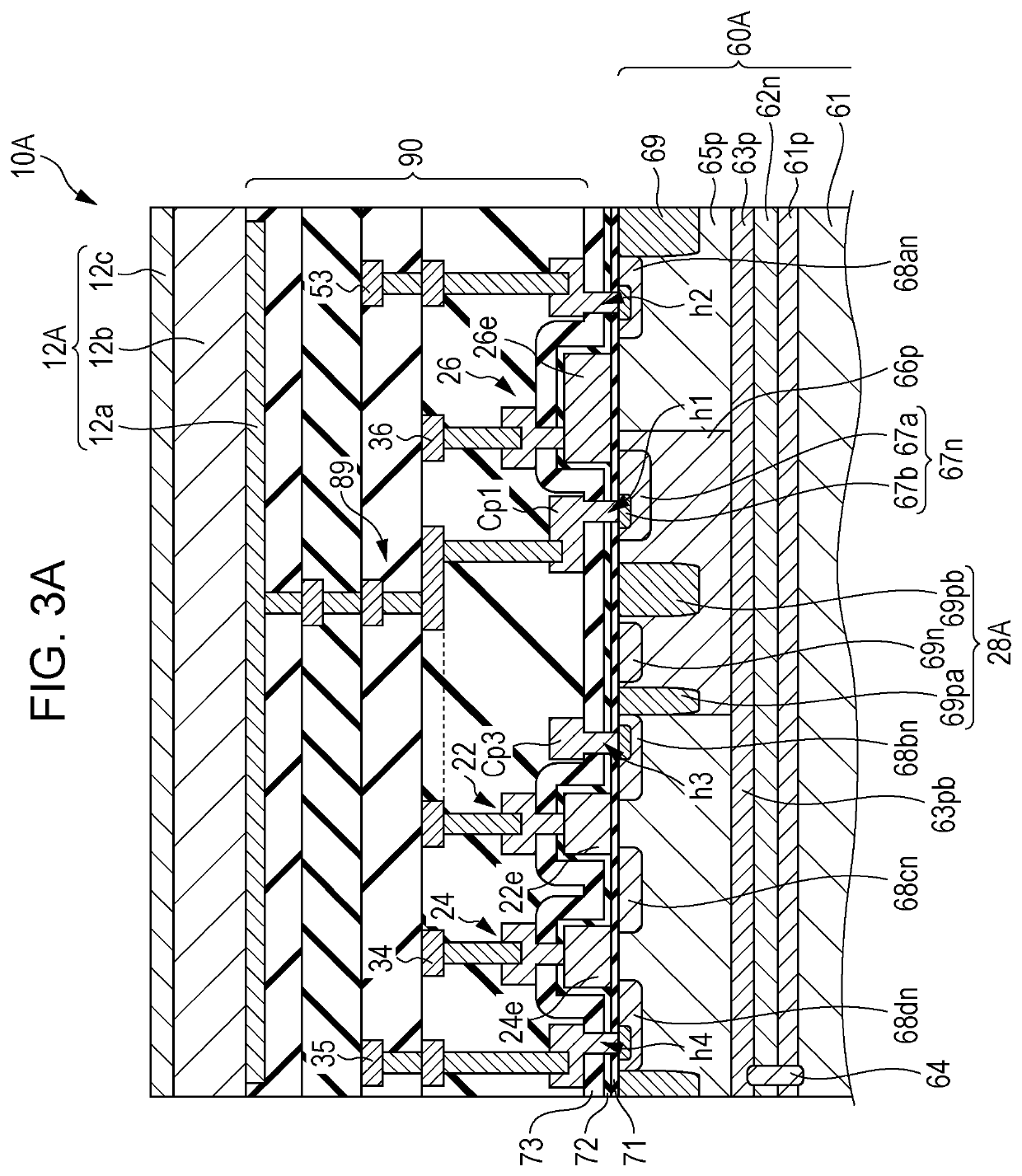Imaging device
a technology of a device and an image, which is applied in the direction of radio frequency controlled devices, transistors, television systems, etc., can solve problems such as and achieve the effect of deterioration of obtained images caused by nois
- Summary
- Abstract
- Description
- Claims
- Application Information
AI Technical Summary
Benefits of technology
Problems solved by technology
Method used
Image
Examples
first embodiment
[0157]FIG. 1 illustrates an exemplary configuration of an imaging device according to a first embodiment of the present disclosure. The imaging device 100A illustrated in FIG. 1 has multiple pixels 10 formed on a semiconductor substrate 60, and peripheral circuits.
[0158]The pixels 10 each include a photoelectric converter 12. The photoelectric converter 12 receives incident light, and generates positive and negative charges, typically a hole-electron pair. The photoelectric converter 12 may be a photoelectric conversion structure including a photoelectric conversion layer disposed above the semiconductor substrate 60, and may be a photodiode formed on the semiconductor substrate 60. Although the photoelectric converters 12 of the pixels 10 are illustrated in FIG. 1 as being spatially separated from each other, but this is only for convenience in describing, and the photoelectric converters 12 of the multiple pixel 10 may be continuously laid out on the semiconductor substrate 60 wit...
first modification
[0206]FIG. 3B schematically illustrates an exemplary configuration of the imaging device according to a first modification of the first embodiment. The primary difference between the pixel As illustrated in FIG. 3B and the pixel 10A described with reference to FIG. 3A is that in the pixel As, a p-type semiconductor layer 63ps is provided in the semiconductor substrate 60A instead of the p-type semiconductor layer 63p.
[0207]The p-type semiconductor layer 63ps is formed in a region other than directly below the impurity region 69n on the n-type semiconductor layer 62n, as schematically illustrated in FIG. 3B. In other words, the p-type semiconductor layer 63ps has an opening at the portion directly below the impurity region 69n. The impurity region 69pa that is part of the p-type impurity region 66p is located inside this opening, as illustrated in FIG. 3B.
[0208]As described above, the concentration of impurity of the p-type impurity region 66p is lower in comparison with the p-type ...
second modification
[0209]FIG. 4 schematically illustrates an exemplary configuration of the imaging device according to the second modification of the first embodiment. The imaging device 100B illustrated in FIG. 4 further has a voltage supply circuit 48 disposed in the peripheral region R2 as compared with the imaging device 100A illustrated in FIG. 1.
[0210]The voltage supply circuit 48 supplies a predetermined voltage to the pixels 10 via a voltage line 38, based on drive signals from the control circuit 46, as schematically illustrated in FIG. 4. The voltage supply circuit 48 is not restricted to a particular power source circuit, and may be a circuit that converts voltage supplied from a power source such as a battery to a predetermined voltage, or may be a circuit that generates a predetermined voltage. The voltage supply circuit 48 may be part of the above-described vertical scanning circuit 42.
[0211]FIG. 5 schematically illustrates the device structure of a pixel that the imaging device 100b il...
PUM
| Property | Measurement | Unit |
|---|---|---|
| voltage | aaaaa | aaaaa |
| voltage | aaaaa | aaaaa |
| voltage VDD | aaaaa | aaaaa |
Abstract
Description
Claims
Application Information
 Login to View More
Login to View More - R&D
- Intellectual Property
- Life Sciences
- Materials
- Tech Scout
- Unparalleled Data Quality
- Higher Quality Content
- 60% Fewer Hallucinations
Browse by: Latest US Patents, China's latest patents, Technical Efficacy Thesaurus, Application Domain, Technology Topic, Popular Technical Reports.
© 2025 PatSnap. All rights reserved.Legal|Privacy policy|Modern Slavery Act Transparency Statement|Sitemap|About US| Contact US: help@patsnap.com



